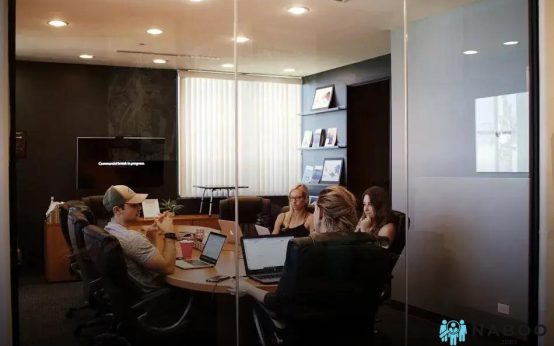Returning to the workforce after a significant hiatus can feel daunting. Whether you took time off for personal reasons, education, or any other situation, the challenge of re-entering should not be underestimated. The job market has evolved, and understanding modern workplace dynamics is crucial. In the following sections, we will explore vital strategies to ease your transition, from networking to upskilling. Let’s dive into ways to confidently re-establish your career and make a lasting impression.
Understanding Modern Workplace Dynamics
The modern workplace has evolved significantly in recent years, making it crucial to understand its dynamics when returning to work after an extended break. Flexibility and adaptability have become key components of today’s work culture, with remote work options and hybrid models becoming more prevalent. Companies are now valuing diverse experiences and perspectives, which can be an advantage for those re-entering the workforce after a hiatus.
Technology plays a vital role in contemporary workplaces. Being comfortable with digital tools and platforms is essential. It might be beneficial to familiarize yourself with collaborative tools used in modern settings, such as project management software or communication platforms like Slack or Zoom. These tools help facilitate teamwork across different locations and time zones.
Another critical aspect is workplace culture. Understanding the emphasis on inclusivity and mental well-being can help you navigate the dynamics better. Many organizations are focusing on creating supportive environments with resources for mental health and well-being. When entering these spaces, maintaining an open mind towards these initiatives can aid in a smoother transition.
Moreover,
network building
has transformed with a strong leaning towards digital-first connections. This aspect can influence how you interact with colleagues and build professional relationships when reintegrating into the workforce. Engaging in online communities and professional networks could enhance your understanding and readiness to adapt to these modern dynamics.
Understanding these aspects of modern workplaces helps in feeling more confident and prepared to tackle the challenges of rejoining the workforce.
Rebuilding Your Professional Network
One of the significant challenges when returning to work is re-establishing your professional network. This is crucial for finding new job opportunities and staying updated on industry trends. Here are some strategies to effectively rebuild your network:
- Reconnect with Old Contacts: Reach out to previous colleagues, mentors, or supervisors. A simple email or LinkedIn message can reignite past professional relationships.
- Attend Networking Events: Look for industry-specific conferences, seminars, and workshops. These events offer excellent opportunities to meet new people and learn about the latest developments in your field.
- Utilize Online Platforms: Platforms like LinkedIn and industry-specific forums are valuable tools for expanding your network. Regularly engage with posts and discussions to increase your visibility.
- Join Professional Groups: Many industries have professional groups that offer networking opportunities. Consider joining both online groups and local chapters for in-person meetings.
- The Power of Informational Interviews: Request informational interviews with industry insiders to gain insights and possibly uncover hidden job opportunities. It’s a way to learn about what’s currently important in your field.
Rebuilding your professional network is an essential part of the journey back into the workforce. Implement these strategies over time, and you’ll be on your way to reconnecting with your industry and uncovering those valuable opportunities.
Upskilling: Bridging the Knowledge Gap
Returning to the workforce after a significant break can be daunting, especially with the rapid pace of industry changes today. Upskilling plays a crucial role in bridging any knowledge gaps you might face. Learning new skills ensures that you remain relevant and competitive in the modern job market. The digital landscape evolves quickly, and gaining certifications in areas like data analytics, digital marketing, or even basic computer skills can give you an edge.
Online Courses and Resources
There are countless platforms offering online courses that can be accessed at your convenience. Websites like Coursera, Udemy, and LinkedIn Learning offer a range of subjects tailored to different industries and skill levels. These courses enable you to learn at your own pace and acquire certifications that demonstrate to employers your proactive attitude and adaptability.
Additionally, participating in webinars and attending industry conferences, whether virtually or in-person, can significantly enhance your understanding and keep you updated with current trends. It’s also an excellent way of networking with professionals who could provide further learning opportunities or job offers.
Practical Application of New Skills
Volunteer work or internships are beneficial ways to apply newly acquired skills in real-world scenarios. These experiences not only bolster your resume but also help build confidence by allowing you to contribute actively in a professional setting. Adapting quickly to team projects or tasks involving your new skills can further solidify your place in the workforce.
While focusing on technical skills is important, soft skills such as communication, teamwork, and problem-solving remain equally valuable. Interactive workshops or group activities are great ways to develop these skills and enhance your ability to collaborate effectively within a company.
Overall, proactive effort in learning and applying new skills demonstrates your commitment to personal growth and readiness to tackle the challenges of a modern workplace.
Crafting a Standout Resume
When returning to work after a long gap, your resume is your first opportunity to make a great impression. To stand out in today’s competitive job market, you must tailor your resume to highlight your strengths and relevant experiences. Start by identifying the key skills and achievements from your past roles, and make sure each aspect of your career that you include is directly aligned with the job description you are applying for.
Focus on Recent and Relevant Experience
Given the gap, prioritize experiences and skills that fit the job you desire now. You can include any volunteer work, part-time jobs, or projects that kept your skills sharp during the gap. Clearly display these in a way that accentuates growth and learning, using bullet points for better readability.
Use Keywords Wisely: Most companies use Applicant Tracking Systems (ATS) to filter through resumes. Ensure you use industry-specific keywords from the job description. This technique not only helps you stand out to humans but also ensures your resume makes it past automated filters.
It’s important to also convey your commitment to personal and professional growth. Mention any upskilling activities you pursued during the break, like online courses or certifications. These not only demonstrate initiative but also showcase your willingness to stay updated and adapt to the current work environment.
Be Honest Yet Strategic: While honesty is crucial, strategically present your experiences. A functional format that highlights skills over chronological history can be beneficial. This helps shift the focus from what you’ve done in the past to what you can do for the employer now.
Conclusion of the section: Ensure every component of your resume tells a compelling story about your professional journey, making it easy for employers to see the value you can bring to their team.
Preparing for Interviews with Confidence
One key to successfully returning to work after a long gap is ensuring you approach job interviews with confidence. Interviews have evolved, with an increased focus on behavioral questions and assessing cultural fit. To showcase your readiness, begin by researching the company thoroughly. Understanding their values and recent projects can give you an edge.
Practice answering common interview questions, but also anticipate those that might address your career gap. Develop a concise and positive explanation for your time away from the workforce. Focus on what you learned or achieved during that period, such as volunteer work, freelancing, or courses you might have taken.
Utilize mock interviews to simulate the actual experience. Feedback from friends or mentors can be invaluable in refining your responses and boosting your confidence. Remember, body language is vital; maintain good posture, eye contact, and a friendly demeanor throughout.
Lastly, prepare insightful questions for the interviewer. This demonstrates your genuine interest in the role and helps you determine if the company aligns with your career goals. Confidence in interviews comes from preparation and clarity, ensuring you present your best self.




